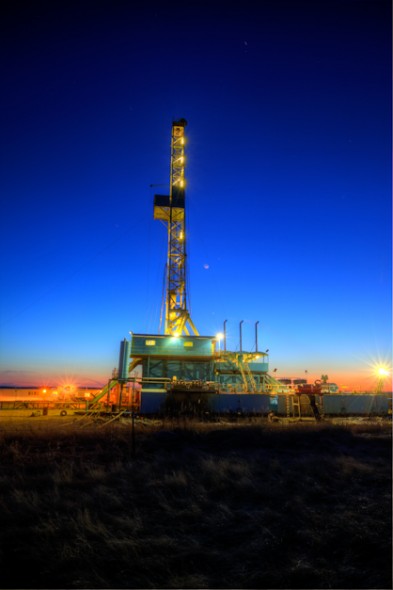 Growing up in Wyoming, the lights from the glowing oil derrik seemed to be the western version of the Northern Lights. They were untouchable and mysterious. They represented a world I knew nothing about.
Growing up in Wyoming, the lights from the glowing oil derrik seemed to be the western version of the Northern Lights. They were untouchable and mysterious. They represented a world I knew nothing about.
I remember driving through the vast empty space between Green River and Laramie, lost in thought. Pondering what life must be like on a rig. After all, the derrik ran 24 hours a day, rain or shine, in extreme heat and extreme cold. At times the only lights in the world during the dark windy winter months would be the luminous glow from a distant drilling rig. That was part of the allure of the drilling rig.
A month ago, I was commissioned by a wellhead company to document the work of installing wellheads, BOPs and the maintenance needed to keep it all running. Before I knew it, I found myself sitting on a 12 passenger turbo-prop headed to the distant plains for North Dakota. The Bakken Oil field is one of the largest and most active formations in the lower 48 states. The discovery of oil in North Dakota has turned sleepy cow towns into busting oil stations.
Watford, North Dakota is such a town. Just recently it was written up in the New York times. The author discussed the challenges the city faces and the struggle with housing the men working the Bakken field. This town would be my home for the next 5 days. For 14 hours a day, I followed a group of men around to the various rigs while they installed BOPs, lubed wellheads and performed general up keep. Finally I got to see the inside, or rather all around the mystical drilling rig.
The men that work these rigs are made of movie stuff. They have their own language. They have their own hand signals. They even have their own names for the specific jobs on the derrik, and unless you have proven yourself, they have their own name for you. These men are hard. Working 12-14 hour shifts in the dead of winter, exposed to the elements with some of the most dangerous equipment in the world, makes a person tough. The work is wet and thick with muddy oil that bubbles form the hole. The tools are enormous and one misstep or a slip in attention and life becomes very serious very quickly.
As I was shooting pictures of the men installing a BOP, one of the guys said to me, “hey, don’t step there.” I looked at him with my usual “yea, no shit” look since he was pointing to a large pool of watery mud, that had the consistency of thick chocolate milk. What did he think, I would just step in a pool of water with my camera strapped to me? So, I looked at him, with that same look and said, “yea, ok”. Then he looked back and said it again; I must have been getting closer to the pool. With the same look I said, “So, it isn’t just a pool of water?” “Nope,” he said ” ya step in there and we’ll never see y’again. That goes down 150 feet and there is no way to get ya out.” Needless to say, I didn’t get any closer to the hole.
In the end, I got some great shots for the company. But the shots that truly stand out in my mind are the images of the men on the rig. One of my favorite photographers did an entire series on oil rig workers. Richard Avedon, in the mid 1980’s produced the most vivid and striking images I have ever seen. My images are not the same in any stretch of the imagination, but they do capture what the work is like. Oh, and for the record, the guy with the sledge hammer is the one who told me where NOT to step.

